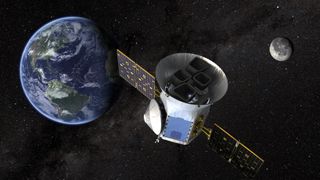As I perused through current events happening in the astronomical world, I was drawn to a new report detailing the features on the surface of Mars suggesting the existence of large rivers. It was at this moment that it occurred to me that I have yet to write about the eight planets in our solar system (I wrote about Pluto, but Pluto had its planetary membership revoked a few years back). With that, I thought it best I start with Mercury, the closest planet to the Sun.

It’s Mercury!
Mercury is the smallest planet in our solar system; having a diameter of roughly 3000 miles, it only slightly larger than Earth’s moon which has a diameter of approximately 2200 miles. Mercury, however, is also the “fastest” planet in the solar system because it has the takes the shortest amount of time to revolve around the Sun – about 88 Earth days. However, having the title of the fastest planet is not without its downsides. Since Mercury is so close to the Sun, the Sun’s solar flares and radiation have almost completely stripped Mercury of its atmosphere. This makes it incredibly difficult for Mercury to regulate its surface temperature. During the day Mercury’s surface can reach temperatures of over 800 degrees Fahrenheit. Likewise, at night, the surface of Mercury plummets to a chilling -300 degrees Fahrenheit. These extreme temperatures go to show how much Earth’s atmosphere does for our temperature regulation!

The Roman God Mercury
Mercury was named after the Roman god of speed, messages, trickery, commerce, and eloquence. Personally, I feel there are a few contradictory terms in the description of Mercury. In any case, Mercury was named after the Romans, who were able to observe the five “classical planet” (Mercury, Venus, Jupiter, Saturn, and Mars). The Romans named each of these observable planets for their Roman gods. While it is not 100% clear, Mercury’s name was most likely given because of its fast orbit period.
At the moment, there have been two major scientific explorations of Mercury. Way back in the 1970’s, NASA launched the Mariner 10 to take images of the planet and relay them back to Earth over the course of a two-year mission. The second mission was Messenger, launched in 2008 by NASA. Messenger was strategically launched into the orbit of Mars so that it could have more time circling and recording the planet. This strategy worked well for the next 7 years before Messenger finally collided with the surface of Mercury.
Unfortunately, Mercury doesn’t interest me very much. I think it’s incredibly interesting that the temperatures spike so drastically because Mercury lacks an atmosphere, but I feel there simply isn’t much history to the planet. When doing some research, I was hoping to find a bit into the story of how the Romans decided to name the planet Mercury, but it appears they did so relatively arbitrarily. Regardless! Mercury is a planet, and it must be respected as such.

